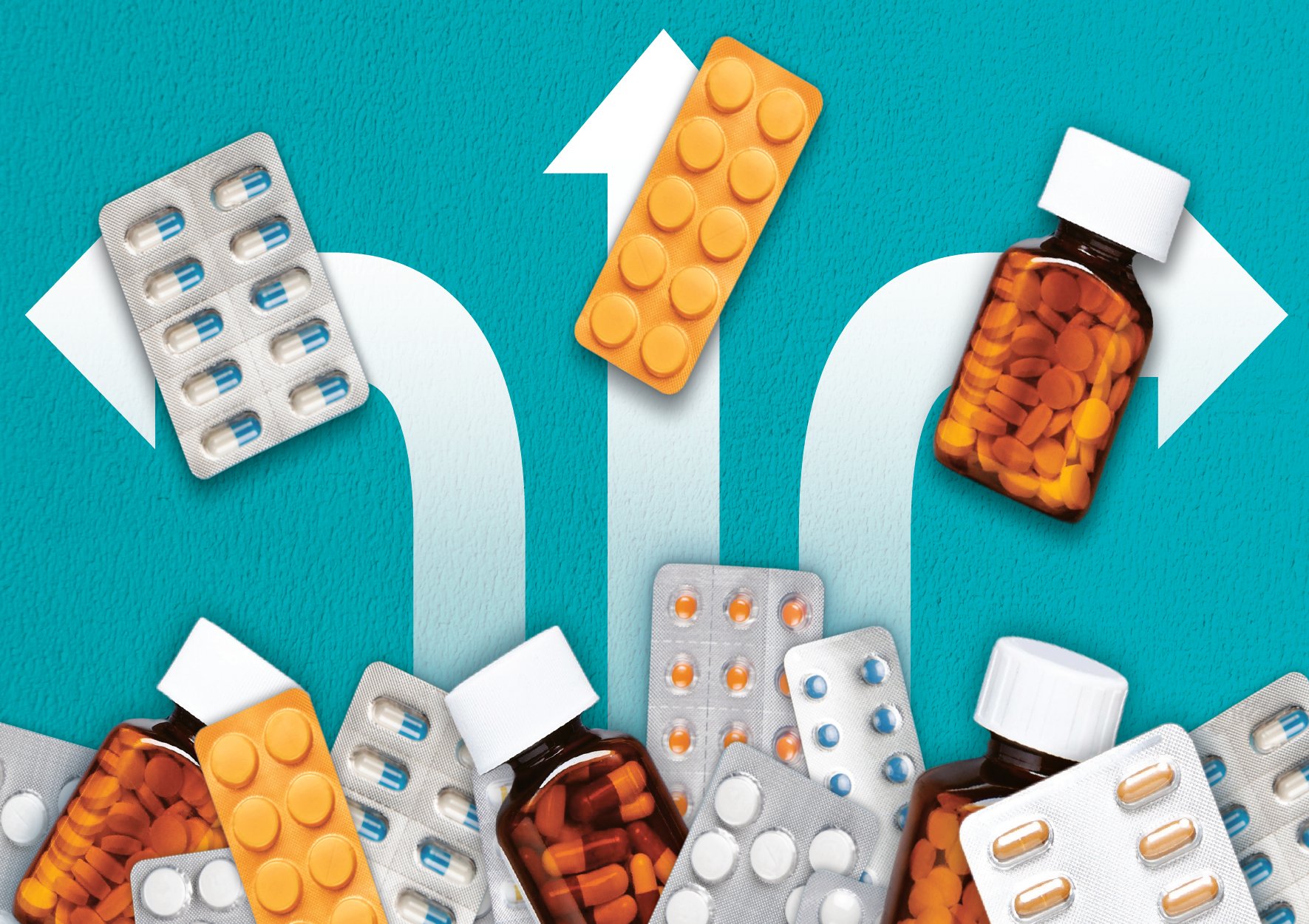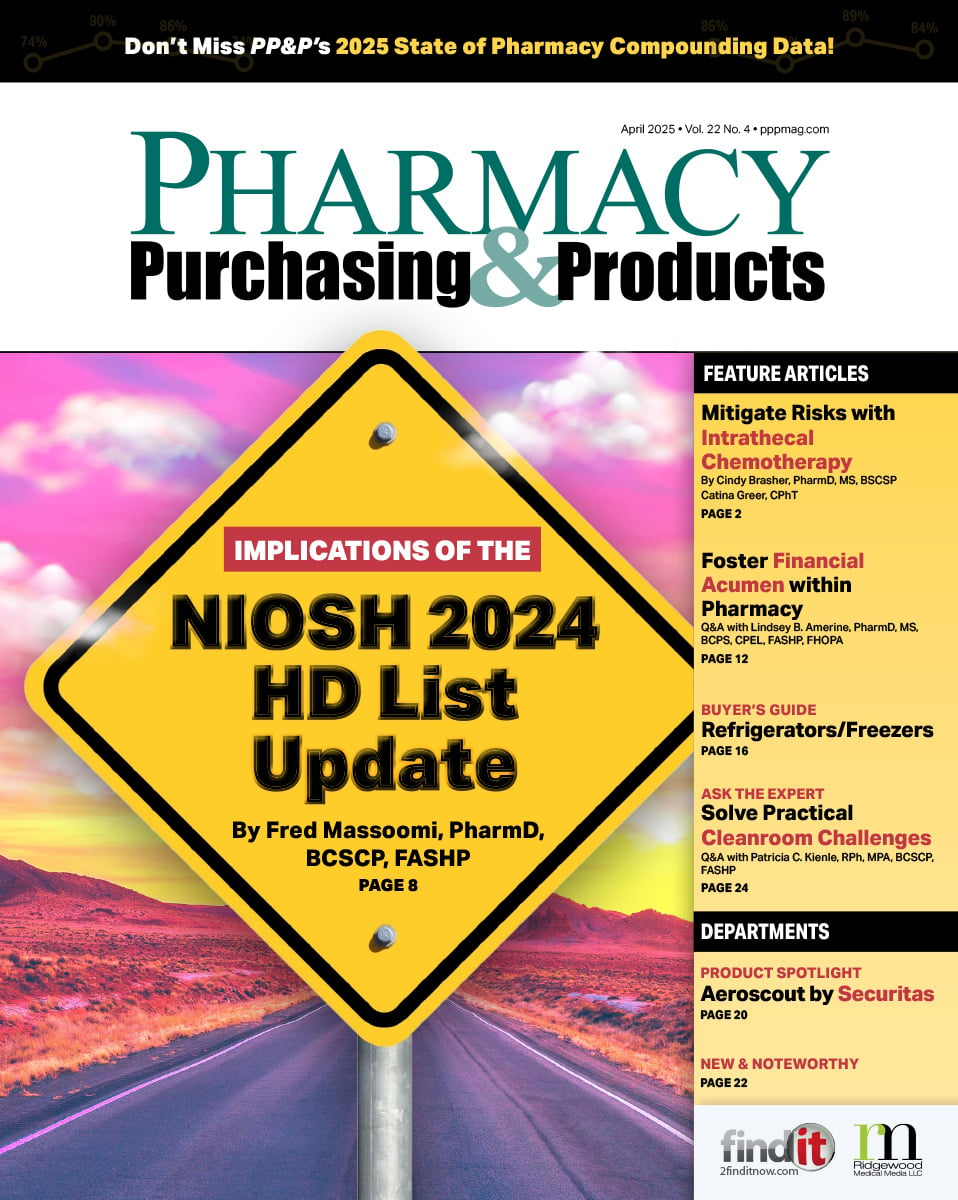- Show Menu
- Contact Us
- FAQs
- Reader Service
- Survey Data
- Survey Winners
- Testimonials
- Upcoming Events
- Webinars
- White Papers
Omegaven (fish oil triglyceride) from Fresenius Kabi
From Fresenius Kabi, a fish oil triglyceride injectable emulsion (Omegaven) is referred to as Fish Oil Intravenous Lipid Emulsion (FO-ILE) per the current American Society for Parenteral and Enteral Nutrition (ASPEN) guidelines and recommendations. The product was first introduced in the United States in 2007 for compassionate use in pediatric patients with parenteral nutrition-associated cholestasis (PNAC)–also known as PN-associated liver disease (PNALD)–but now referred to as intestinal failure-associated liver disease (IFALD). (This article will use the term PNAC, as it is the language used in the Omegaven PI.) FO-ILE was approved by the US FDA as an energy and fatty acid source for pediatric patients with PNAC in late 2018. The drug is not indicated for the prevention of PNAC.1

PNAC is most commonly defined as direct or conjugated bilirubin greater than 2 mg/dL in patients receiving PN for a time period greater than 2 weeks. A 2014 review indicated that the overall incidence of PNAC in neonates and children receiving PN was 29.9%. In those patients receiving PN for more than 60 days, the incidence was 60.9%.2 Development of PNAC is associated with increased morbidity and mortality and can progress to liver fibrosis, hepatic failure, and death.
Dosing and Administration
The drug is available as a 10% product in 50 mL (5 g) or 100 mL (10 g) glass vials providing 1.12 kcal/mL. It contains approximately 25-50% fat as EPA and DHA with a high vitamin E content. The recommended FO-ILE dosage for pediatric patients is 1 g/kg per day; this is also the maximum daily dose. The initial rate of infusion should not exceed 0.05 mL/minute for the first 15 to 30 minutes of infusion. If tolerated, the dosage may be gradually increased until reaching the required rate after 30 minutes. The maximum infusion rate should not exceed 1.5 mL/kg per hour or 0.15 g/kg per hour. The drug may be administered as central or peripheral infusion. As with all ILE, a 1.2 micron filter is required for administration, and a vented non-DEHP-containing infusion set should be used if infused from the bottle. The source container and infusion set is changed every 12 hours.
Benefits
FO-ILE is currently FDA approved as a source of energy (kcal) and fatty acids in pediatric patients with PNAC. A study published in 2014 showed statistically significant differences in conjugated bilirubin and alanine aminotransferase when comparing fish oil lipid emulsion to soy lipid emulsion in PN-dependent infants.3 Another 2014 study showed resolution of cholestasis in all surviving patients. However, there was increased mortality with initial high concentrations (>10 mg/dL) of conjugated bilirubin. None of the surviving infants redeveloped cholestasis after initiation of fish oil lipid emulsion.4
A third 2014 study showed that substitution of FO-ILE for soybean oil ILE in children with PNAC correlated with biochemical reversal of cholestasis and improved liver function. The children receiving fish oil triglycerides were compared to historical controls that received variable doses of soy lipid emulsion. Median follow-up occurred at 1.9 years; all surviving patients were free of cholestasis at follow-up.5 While studies have shown positive effects of FO-ILE on biochemical markers of cholestasis, FO-ILE is not FDA approved for the prevention of PNAC.
Precautions
Patients with hypersensitivity to fish or egg protein should not be prescribed FO-ILE. Due to the fish oil composition, patients with severe hemorrhagic disorders should avoid FO-ILE therapy because of potential effects on platelet aggregation. The product contains low amounts of essential fatty acids along with the conditionally essential fatty acids; therefore, patients should be monitored for essential fatty acid deficiency. As it could potentially interfere with certain laboratory blood tests (hemoglobin, lactate dehydrogenase, bilirubin, and oxygen saturation), these tests should be drawn 5 to 6 hours after the lipid infusion has been stopped in order to ensure lipid clearance. Adverse reactions in greater than 5% of FO-ILE treated patients from studies are shown in TABLE 1.1

Summary
Omegaven (FO-ILE) is an alternative ILE recently introduced into the United States specifically for use in pediatric patients with PNAC. Institutions should develop policies and procedures to ensure safe use of this new modality.
 Phil Ayers, PharmD, BCNSP, FASHP, is chief, clinical pharmacy services, Baptist Medical Center, and associate clinical professor at the University of Mississippi School of Pharmacy. He received his BS in pharmacy and his PharmD from the University of Mississippi. Phil serves as secretary-treasurer for the board of directors of ASPEN, is the past chair of the ASPEN Parenteral Nutrition Committee, and is the chair of the USP Parenteral Nutrition Expert Panel.
Phil Ayers, PharmD, BCNSP, FASHP, is chief, clinical pharmacy services, Baptist Medical Center, and associate clinical professor at the University of Mississippi School of Pharmacy. He received his BS in pharmacy and his PharmD from the University of Mississippi. Phil serves as secretary-treasurer for the board of directors of ASPEN, is the past chair of the ASPEN Parenteral Nutrition Committee, and is the chair of the USP Parenteral Nutrition Expert Panel.
 Andrew Mays, PharmD, CNSC, is a clinical pharmacy specialist in nutrition support at the University of Mississippi Medical Center in Jackson, Mississippi. He is also a clinical assistant professor at the University of Mississippi School of Pharmacy. Andrew serves as president-elect for the Mississippi Society of Health-System Pharmacists and president of the Mississippi Society for Parenteral and Enteral Nutrition.
Andrew Mays, PharmD, CNSC, is a clinical pharmacy specialist in nutrition support at the University of Mississippi Medical Center in Jackson, Mississippi. He is also a clinical assistant professor at the University of Mississippi School of Pharmacy. Andrew serves as president-elect for the Mississippi Society of Health-System Pharmacists and president of the Mississippi Society for Parenteral and Enteral Nutrition.
 Carman Dixon, PharmD, is a clinical pharmacy specialist at Mississippi Baptist Medical Center in Jackson. He is the lead pharmacist for the Pharmacokinetics Service in addition to serving on the Medication Safety and Pharmacy and Therapeutics Committees. Carman is the current education chairman for the Mississippi Pharmacist Association.
Carman Dixon, PharmD, is a clinical pharmacy specialist at Mississippi Baptist Medical Center in Jackson. He is the lead pharmacist for the Pharmacokinetics Service in addition to serving on the Medication Safety and Pharmacy and Therapeutics Committees. Carman is the current education chairman for the Mississippi Pharmacist Association.
 Jenny Anderson, MS, RD, LD, CNSC, is a registered dietitian at Baptist Health Systems in Jackson. She completed her undergraduate degree in nutrition and dietetics at the University of Southern Mississippi and obtained her Master’s Degree from the University of Alabama.
Jenny Anderson, MS, RD, LD, CNSC, is a registered dietitian at Baptist Health Systems in Jackson. She completed her undergraduate degree in nutrition and dietetics at the University of Southern Mississippi and obtained her Master’s Degree from the University of Alabama.
 Allison Cochran, DNP, is a registered nurse in the emergency department at University of Mississippi Medical Center in Jackson. She is a member of the Mississippi Nurses Association and Sigma Theta Tau International. Allison is a recent graduate of Loyola University New Orleans Doctor of Nursing Practice program and received her BSN from Louisiana State University Health Sciences Center.
Allison Cochran, DNP, is a registered nurse in the emergency department at University of Mississippi Medical Center in Jackson. She is a member of the Mississippi Nurses Association and Sigma Theta Tau International. Allison is a recent graduate of Loyola University New Orleans Doctor of Nursing Practice program and received her BSN from Louisiana State University Health Sciences Center.
References
- Omegaven [Package Insert]. Graz, Austria. Fresenius Kabi. July 2018.
- Lauriti G, Zani A, Aufieri, et al. Incidence, prevention and treatment of parenteral nutrition-associated cholestasis and intestinal failure-associated liver disease in infants and children: A systematic review. JPEN J Parenter Enteral Nutr. 2014;38(1):70-85.
- Lam HS, Tam YH, Poon TCW, et al. A double-blind randomised controlled trial of fish oil- based versus soy-based lipid preparations in the treatment of infants with parenteral nutrition associated cholestasis. Neonatology. 2014;105(4):290-296.
- Premkumar MH, Carter BA, Hawthorne KM, et al. Fish oil-based emulsions in the treatment of parenteral nutrition-associated liver disease: an ongoing positive experience. Adv Nutr. 2014;5(1):65-70.
- Calkins KL, Dunn JCY, Shew SB, et al. Pediatric intestinal failure associated liver disease is reversed with six months of intravenous fish oil. JPEN J Parenter Enteral Nutr. 2014;38(6):682-692.
Like what you've read? Please log in or create a free account to enjoy more of what www.pppmag.com has to offer.








